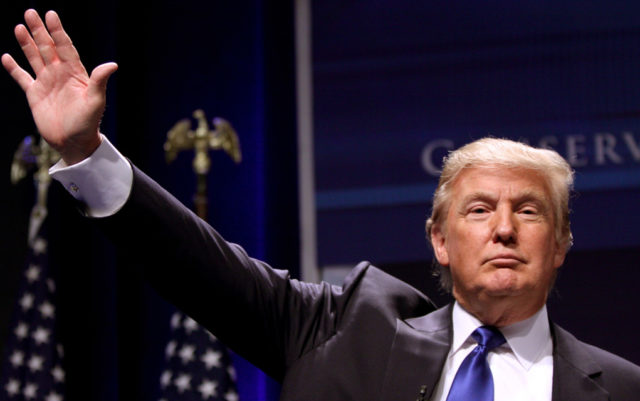
Back in August, I was startled to read a lengthy New York Times article — “Body Bags and Enemy Lists: How Far-Right Police Officers and Ex-Soldiers Planned for ‘Day X’” — about a thwarted fascist insurrection in Germany.
The story by Katrin Bennhold began: “Güstrow, Germany — The plan sounded frighteningly concrete. The group would round up political enemies and those defending migrants and refugees, put them on trucks and drive them to a secret location.
“Then they would kill them.
“One member had already bought 30 body bags. More body bags were on an order list, investigators say, along with quicklime, which can be used to mask the stench of buried corpses.”
The plot originated in a nationwide chat network for soldiers and others with far-right sympathies. Bennhold wrote the alleged conspirators included active army reservists and police officers as well as “a doctor, an engineer, a decorator, a gym owner, even a local fisherman.”
Some of the group, including the leader, are members of the far-right party Alternative for Germany, which has become the third largest force in the national parliament.
As it turns out, German authorities have been investigating the country’s underground far-right scene for some time. There have been a number of recent alarming events such as the murder of conservative local politician Walter Luebcke in June 2019 and an attack on a synagogue in the city of Halle in October 2019.
In November 2020, German federal prosecutors charged 12 far rightists with planning “terrorist attacks” on politicians, asylum-seekers and Muslims. They allegedly were going to mimic the March 2019 attack on two mosques in Christchurch, New Zealand, which left 51 people dead and 40 injured.
Eleven of the men, arrested in countrywide raids in February, are accused of being members of a “terrorist organization” and violating gun laws. The 12th alleged conspirator was charged with supporting a “terrorist group.” Authorities claim that their goal was “destabilizing and ultimately overthrowing” Germany’s government.”
Meanwhile, Trump’s ambassador to Germany, Richard Grenell, sparked a storm of outrage when he told Breitbart that he wanted to “empower” the far-right parties in Europe.
Grenell was just doing what The Donald wanted. Trump’s election in 2016 was a big boost to European far rightists. In January 2017, French far-right leader Marine Le Pen declared, “We are experiencing the end of one world and the birth of another.”
Trump’s defeat this year is a crushing disappointment. Le Pen was asked if she would recognize Joe Biden as the next U.S. president. She said “absolutely not” until all of Trump’s legal challenges are exhausted.
Al Jazeera reporter Michael Colborne writes that the European far right quickly echoed Trump’s false claims of election fraud. The most hardline elements “openly hope for violence, chaos and destabilization in the wake of Joe Biden’s win.”
In Serbia, the neo-Nazi group Serbian Action said, “The only gain for Serbia, Europe and humanity, in connection with the [post] election situation in the U.S.A. would be the destabilization and disintegration of this criminal-monster state, which is currently, unfortunately, unlikely.”
Back in 2018, former Trump White House chief strategist Steve Bannon went on a grand worldwide tour to create a transnational far-right movement. He proclaimed that “the tide of history is on our side.”
But the far right stumbled. They have faced defeats in elections, are mired in scandals and are engaged in fighting each other. During the pandemic, the mainstream parties have benefited from a “rally around the flag” sentiment. The Alternative for Germany party at first acted like Trump, but that backfired. Chancellor Angela Merkel’s response to the pandemic has made her very popular.
Financial Times columnist Janan Ganesh argues that since there is less immigration during the pandemic, the far right has lost its biggest issue. But he says that in the long-term the pandemic might boost the far right. “Economic insecurity, and a stronger focus on the nation-state and its borders, could help them.”
However, Bannon might not be able to exploit this opportunity. In August, the supposed populist was arrested aboard a $35 million, 150-foot yacht. He was charged with defrauding hundreds of thousands of donors to a private fundraising effort called We Build the Wall.
In November, Bannon posted a video online suggesting that Dr. Anthony Fauci and FBI Director Christopher Wray should be beheaded.
Bannon said, “I’d put the heads on pikes. Right. I’d put them at the two corners of the White House. As a warning to federal bureaucrats: Either get with the program or you’re gone.”
Was Bannon just trolling? The FBI director he wants to behead said that America’s worst domestic terrorist threat is “racially motivated violent extremism” by white supremacists. Militiamen are alleged to have plotted to kidnap and execute Michigan Governor Gretchen Whitmer. That was a backup plan to a more ambitious “Plan A” to assemble 200 armed “patriots” who would take over the state capitol building and then hold televised executions of officials.
This opinion column does not necessarily reflect the views of Boulder Weekly.














